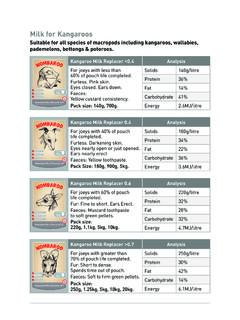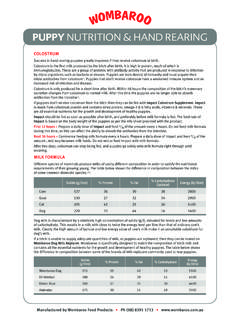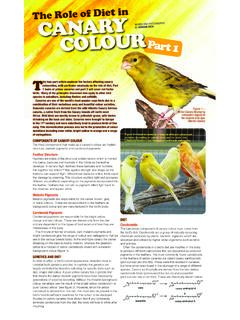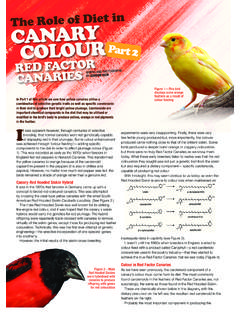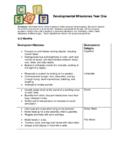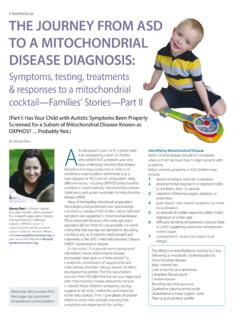Transcription of ABOUT MARSUPIAL MILK - Wombaroo
1 ABOUT MARSUPIAL milk milk provides the essential nutrients for growth and development of juvenile marsupials. Information on the nutritional composition of milks from a range of different species is sourced from both published data as well as private research undertaken by Wombaroo . This research shows that MARSUPIAL milk undergoes significant changes in composition (fat, protein & carbohydrate) over the period of lactation. The chart below shows the changes in milk components for a typical macropod (kangaroo) joey. Different species of marsupials (possums, wombats, koalas) have different compositional changes during lactation and therefore have different developmental changes in milk composition cater for the widely differing nutritional requirements of the developing joey from furless pinkie to fully out-of-pouch.
2 For example early lactation macropods obtain much of their energy from carbohydrate and cannot tolerate high fat levels. However later in lactation this situation is reversed, with milk becoming heavily concentrated with fat to provide additional energy. Protein levels also change to cater for the increased requirements for fur growth during mid lactation and the rapid growth rate seen around pouch emergence. For these reasons a single milk formula is not ideal for hand rearing any MARSUPIAL . Different Wombaroo milks are therefore formulated to provide the optimum nutrition at different stages of a joey s Joey DevelopmentChange in milk Components with FactorEmerging from pouchFully out of pouchThe Wombaroo milk stages are related to the Age Factor (AF) of the joey, which is the age of a joey as a proportion of its total pouch life:Age Factor (AF) =For example a Grey Kangaroo is normally fully out of the pouch at ABOUT 320 days.
3 Therefore a Grey Kangaroo joey at 160 days has an Age Factor of 160/320 = A joey at fully out of pouch age has completed 100% of its pouch life so it has an age factor of By definition, a joey that spends any time in the pouch has an age factor of less than Pouch emergence begins for most species of macropods at an Age Factor of around to concept of Age Factor helps us standardise the nutritional requirements for joeys from related species. Macropods develop at roughly the same rate when compared using Age Factor so that a Potoroo at 65 days, a Swamp Wallaby at 130 days, and a Grey Kangaroo at 160 days all have similar nutritional requirements (All have an Age Factor = ).
4 The table below outlines the typical developmental milestones for macropods based on Age Factor (reproduced with permission from Helen George). This provides a useful guideline as to the expected development of a joey over FactorStage of DevelopmentNutritional Considerations0 (birth)Eyes closed; front legs developed; buds for hind energy milk , with a low fat content. Digestive system is not well developed - milk contains easily digested carbohydrates and proteins. Immunoglobulins to boost immune gut closed; ears folded flat on top of head; ear-canal closed; membrane joining lip; small hole at front of mouth for teat; hind legs between lips has disappeared; whiskers growing.
5 Runny yellow still closed; ears still flat but starting to become upright; animal fully increasing energy content of milk . Protein contains sufficient levels of sulphur-containing amino acids (cysteine & methionine) for the onset of hair & nail growth. Still limited gut now open; dark colouring on back of hands, bridge of nose, tips of ears; fur ABOUT to come through skin; poking head out from pouch occasionally; Faeces yellow custard to toothpaste colour visible under skin on entire body; Fur forming on bridge of nose and of joeyAge when fully out of pouchAge FactorStage of DevelopmentNutritional lengthening rapidly all over the body; fur appears last on belly/chest.
6 Leaning from mother s pouch and eating dirt to establish gut flora, starting to thermoregulate. Faeces darkening and carbohydrate content in milk with high levels of associated digestive enzymes. Able to handle higher fat levels in grazing from pouch making use of green feed; secondary coat appearing, the animal looks like a miniature adult. Faeces soft to firm green energy milk with a high fat content - coincides with increased activity levels of joey. Sharp fall in carbohydrate content of milk with decrease in associated gut enzymes.
7 Increasing levels of body-building proteins (caseins, -globulins) to coincide with peak growth flora developed for digestion of solid starting to emerge from the pouch; spends longer and longer periods outside the pouch; feeding, urinating, defecating outside the incisor teeth erupting through gum; full length fur fully emerged from the pouch; still drinking milk ; solid food plays a large part in the S IN WOMBAROOW ombaroo contains a blend of protein, carbohydrate, fat, vitamins and minerals formulated to match as closely as possible the composition of natural mother s is a recombination of bovine milk protein fractions to produce the optimum proportion of caseins and whey proteins, with a balanced amino acid profile.
8 Essential amino acids have been fortified with extra lysine, cysteine & methionine the latter of which are particularly important for healthy hair is mainly in the form of glucose. Some formulations also contain maltodextrin made from the enzymatic digestion of starch, which is high in glucose-oligosaccharides and low in -limit dextrin. Our research has shown this to be a well-digested form of energy, particularly for early lactation marsupials when carbohydrate accounts for up to 40% of the milk s energy (Rich BG, 1993.)
9 Activities of intestinal disaccharidases in hand-reared macropods. Wildlife Diseases Association of Australasia. Mallacoota). All MARSUPIAL formulae are low in lactose and free galactose to minimize digestive is a mix of milk fat solids, vegetable oils and fatty acid esters prepared from fish oil. These ingredients are blended to produce the optimum mix of saturated, mono-unsaturated and polyunsaturated fats and include the essential omega-3 fatty acids -linolenic acid (ALA), eicosapentaenoic acid (EPA) and docosahexaenoic acid (DHA).
10 VITAMIN and MINERAL composition data in MARSUPIAL milk is addition of these micro-nutrients is based on best estimates obtained from those milks that have been analysed. The nutrients well quantified in MARSUPIAL milk include vitamin A, vitamin E, calcium, phosphorous, potassium, sodium, iron and copper. Where values are unknown we have added the full complement of vitamins and minerals in quantities that are acceptable by recognised animal husbandry standards. This includes vitamin D3, vitamin C, vitamin K1, thiamine, riboflavin, pyridoxine, niacin, pantothenic acid, folic acid, biotin, cyanocobalamin, choline, inositol, magnesium, zinc, manganese, iodine and selenium.
